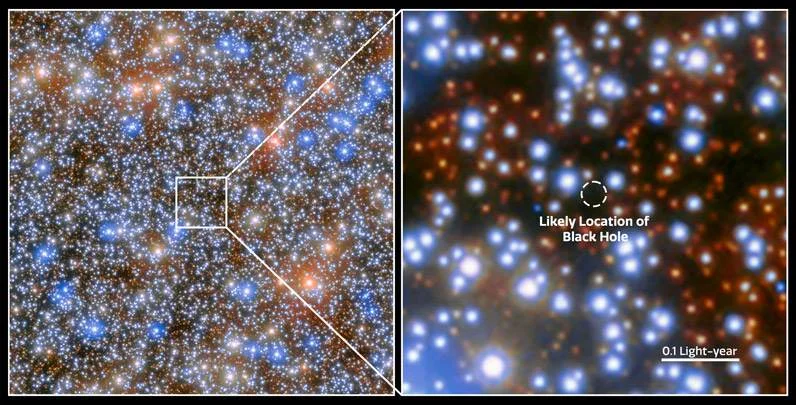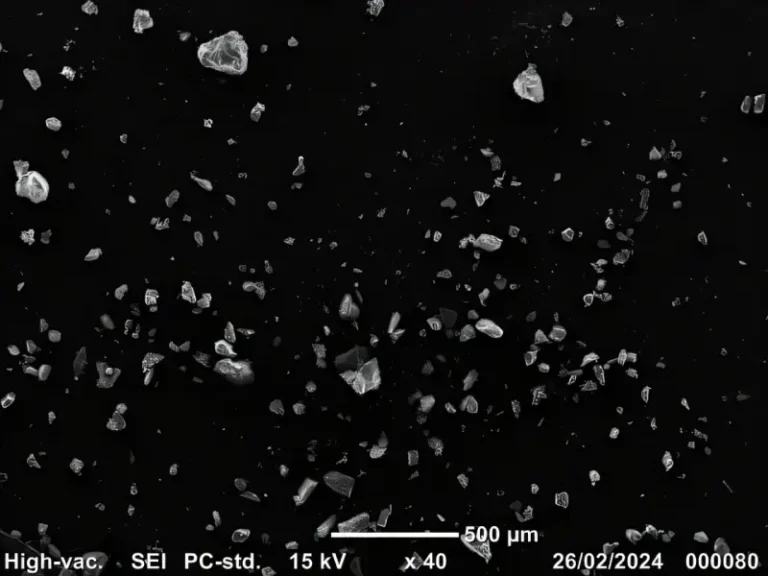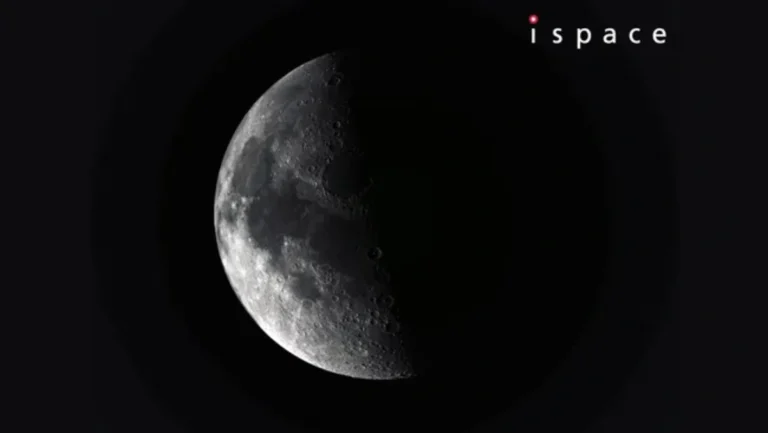Hubble discovers massive black hole closest to Earth

An international team of astronomers has used more than 500 images from the NASA/ESA Hubble Space Telescope, taken over two decades, to detect seven fast-moving stars in the innermost region of Omega Centauri, the largest and brightest globular cluster in the sky. These stars provide strong new evidence for the presence of an intermediate-mass black hole (IMBH).
Intermediate-mass black holes are a long-sought “missing link” in the evolution of black holes. To date, only a few IMBH candidates have been found. Most known black holes are either extremely massive, such as those found in the cores of large galaxies, or relatively light, with a mass less than 100 times that of the Sun.
And since these astronomical objects are among the most extreme environments known to humans, representing a testing ground for the laws of physics and our understanding of how the universe works, several questions arise. If IMBHs exist, how common are they? Does a supermassive black hole grow from an IMBH? How do IMBHs form? Are dense star clusters their preferred home?
One Response on Omega Centauri
Omega Centauri is visible from Earth with the naked eye and is a favorite celestial object for stargazers in the southern hemisphere. It lies just above the plane of the Milky Way and appears almost as large as the full moon when viewed from a dark rural area.
Its exact classification has evolved over time as our ability to study it has improved. It was first listed in Ptolemy’s catalog nearly 2,000 years ago as a single star. Edmond Halley reported it as a nebula in 1677, and in the 1830s, English astronomer John Herschel was the first to recognize it as a globular cluster (spherical collection of stars).
Omega Centauri consists of approximately 10 million stars that are gravitationally bound together. And an international team has now created a huge catalog of their motions, measuring the velocities of 1.4 million of them by studying more than 500 Hubble images of the cluster. Most of these observations were intended to calibrate the space telescope’s instruments rather than be used for scientific purposes, but they proved to be an ideal database for the team’s research efforts.
(The extensive catalog, which is the largest catalog of motions of any star cluster to date, will be openly available).
“We have discovered seven stars that should not be there,” explained Maximilian Häberle of the Max Planck Institute for Astronomy in Germany, who led this research. “They are moving so fast that they should escape from the cluster and never return. The most likely explanation is that a very massive object is gravitationally attracting them and keeping them close to the center. The only object that can be that massive is a black hole, with a mass at least 8,200 times that of our Sun.”
Several studies have suggested the presence of an IMBH in Omega Centauri. However, other studies proposed that the mass could be attributed to a central cluster of stellar-mass black holes and had suggested that the lack of fast-moving stars above the necessary escape velocity made an IMBH less likely by comparison.
Nearest massive black hole
“This discovery is the most direct evidence so far for an IMBH in Omega Centauri,” added team leader Nadine Neumayer, also of the Max Planck Institute for Astronomy, who initiated the study together with Anil Seth of the University of Utah in the United States. “This is exciting because only very few other black holes with a similar mass are known. The black hole in Omega Centauri may be the best example of an IMBH in our cosmic neighborhood.”
If confirmed, at its distance of 17,700 light-years, the candidate black hole resides closer to Earth than the 4.3 million solar mass black hole at the center of the Milky Way galaxy, which is 26,000 light-years away. In addition to the galactic center, it would also be the only known case of several stars tightly bound to a massive black hole.

The science team now hopes to characterize the black hole. Although it is believed to measure at least 8,200 solar masses, its exact mass and precise position are not fully known. The team also intends to study the orbits of the fast-moving stars, which requires additional measurements of the respective line-of-sight velocities. To that end, the study authors have obtained time with the James Webb Space Telescope, and also have some pending proposals to use other observatories.
The current results have been published online in the journal Nature.






